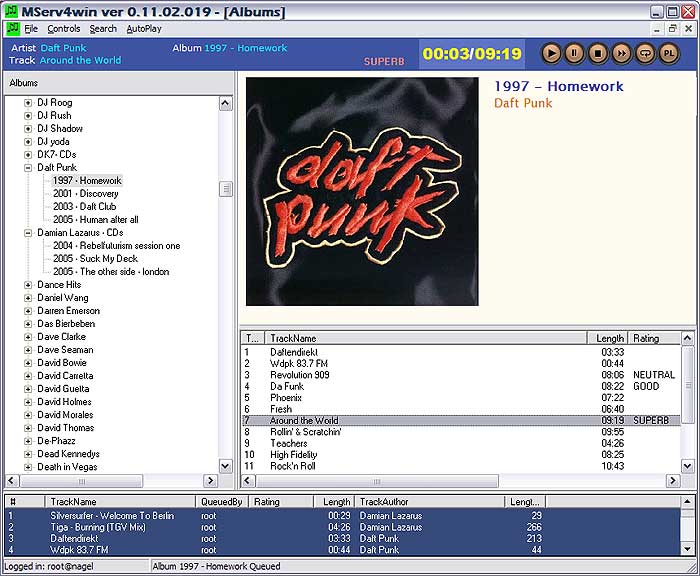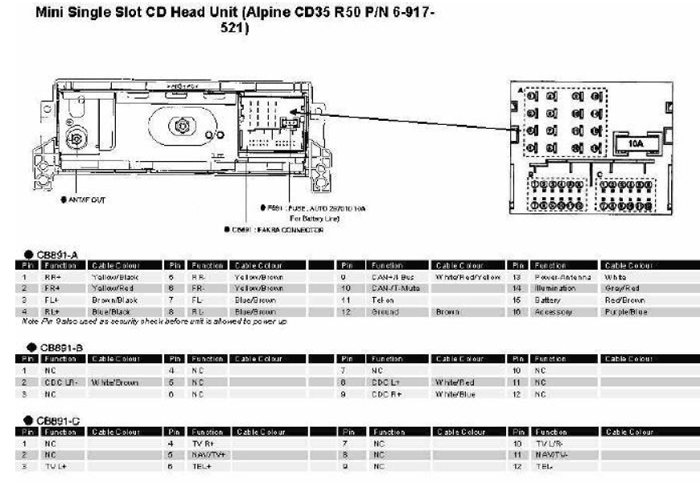To identify that something might be wrong, you can use ipconfig on a windows cmd box:
C:\Documents and Settings\rvw.KOEKJE>ipconfig /all
Windows IP-configuratie
...
Ethernet-adapter LAN-verbinding:
...
Standaardgateway. . . . . . . . . : 10.237.147.2
DHCP-server . . . . . . . . . . . : 10.237.147.50
DNS-servers . . . . . . . . . . . : 213.51.129.37
213.51.144.37
etc
This shows you your CURRENT dhcp server, but if there are multiple dhcp servers running by accident, you will get an IP address from a RANDOM server!
Same with NETSH. The command NETSH DIAG SHOW DHCP only shows your CURRENT dhcp server and does not do a scan.
Even utilities that claim to do this, only show one or only the current dhcp. DHCPexplorer from nsasoft is such a fake application.
Fortunately there is a tool that comes standard with windows, called DHCPLOC. If it is not installed, you can find it on your windows CD under the \support\tools directory OR get it from
here
Give your current IP address as an argument to dhcploc, and press "d" (discover). Press d a few times to get a good view.
C:\WINDOWS>dhcploc 10.237.147.101
15:28:30 OFFER (IP)10.237.147.199 (S)10.237.147.50 ***Form
15:28:32 OFFER (IP)10.237.147.170 (S)10.237.147.1 ***
15:28:32 OFFER (IP)10.237.147.199 (S)10.237.147.50 ***
15:28:34 OFFER (IP)10.237.147.199 (S)10.237.147.50 ***
15:28:35 OFFER (IP)10.237.147.170 (S)10.237.147.1 ***
15:28:35 OFFER (IP)10.237.147.199 (S)10.237.147.50 ***
15:28:36 OFFER (IP)10.237.147.170 (S)10.237.147.1 ***
15:28:37 OFFER (IP)10.237.147.199 (S)10.237.147.50 ***
There! there is a rogue dhcp server running at IP 10.237.147.1 !!
So you know.
(the rogue dhcp server turned out to be a netopia dsl router, which only changes dhcp server settings after a REBOOT! Shame!)
Edit:
Another nice tool is DHCPFIND.EXE, from roadkil. Its free and works, and is a GUI tool, not a commandline tool. Only problem is that it does not show the dhcp server IP, so dhcploc is still the best utility for the job. If you want to try dhcpfind, look here
[ add comment ] | permalink | related link |




 ( 2.9 / 956 )
( 2.9 / 956 )Already for a few years, i'm running MSERV, a great opensource mp3 jukebox which is completely client-server and has a good rating- and genre system which allows it to play random music that corresponds to the current mood, current lister etc.
You can rate numbers as superb, good, normal, bad, awful etc. and it takes this into account to play numbers more or less often, depending on your rating. Everybody can rate, so this is a good jukebox to use with a group of people.
There are a few clients available, and I've taken MservClient as a base to further develop the windows client. MservClient is written by Marco Schulze and Marc Klinger, and can be found here. Because I've changed the whole concept of MservClient, I adopted a new name: Mserv4win. Also, there is not much left from the original code of mservclient. Mserv4win takes the look and feel from winamp and puts it on top of mserv.
One of the things missing in Mserv is a good "cover picture" feature, so I've also added an "x cover" command to get a cover pic from the server. The client still talks to the original server that does not support this command, but with this feature, the experience is a lot better.
Here's a screenshot:

Download Mserv4win: MServ4win.zip
Download source (delphi7): sources.rar
If you want to patch your mserv for "cover" support, use this to patch mserv's cmd.c and recompile: cmd.patch
or replace cmd.c with this version: cmd.c
make sure you put cover .jpg files in the same directory as the album mp3's. Also, make sure the jpg is not too big (max 50k or so)
[ add comment ] ( 75 views ) | permalink | related link |




 ( 2.9 / 1291 )
( 2.9 / 1291 )Even een item in het nederlands. Wat is het toch lastig om informatie te vinden over het printen van acceptgiro's, en dan met name het berekenen van de controle getallen.
Uiteindelijk bij interpay de goede informatie gevonden:
http://www.interpay.nl/binaries/IPforms ... -34971.pdf
Maar hoe werkt het nou? Vrij simpel. Alle controles worden met de bekende 11-proef (modulus-11 algoritme) uitgevoerd. Dat wil zeggen dat je elk cijfer met een weging optelt en het resultaat deelt door 11. De rest die je overhoudt trek je van 11 af en dit geeft het controle getal.
voorbeeld: (16 cijferig betalingskenmerk)
c000 0567 8901 2345 (c=het controlegetal dat we gaan berekenen)
de wegingen zijn 2 4 8 5 10 9 7 3 6 1 en die moet je vanaf rechts toepassen, en als je klaar bent begin je weer van voor af aan. Dus:
c 0 0 0 0 5 6 7 8 9 0 1 2 3 4 5
10 5 8 4 2 1 6 3 7 9 10 5 8 4 2
--------------------------------------------- x
0+ 0+ 0+ 0+10+ 6+42+24+63 +0+10+10+24+16+10 = 215
215/11 = 19 rest 6
11-6 = 5 dus controle getal (c) is 5
dus het betalingskenmerk is dan
5000 0567 8901 2345
Als antwoord op de vraag van wouter:
Indien C = 10 wordt 1 aangenomen
Indien C = 11 wordt 0 aangenomen
[ 1 comment ] ( 265 views ) | permalink | related link |




 ( 2.9 / 883 )
( 2.9 / 883 )I recently bought a mini cooper, because it's such a great car. (yes, it's the cooper-S convertible, model 2005, so the only thing it needs is the "cooper works" upgrade)

But even nowadays, a simple aux-input on the radio is not a standard option. And who listens to music without an mp3 player/ipod?
I have bought an Archos mp3 player with 20Gb disk a couple of years ago, and although it's large and old, and it has a slow USB 1.0 port, it still functions as my music take-away. But without an input on the car radio, it's useless.
But no worries, a bit of googling suggested a solution.
unfortunately, this did not work for me, as other people in the article suggest, it works only for *some* radio models.
So I started some experiments. First, get the radio out. The plastic cover under the steering wheel is locked by some "clicking" pins, so a hard pull will tear it down. This makes room to unscrew both torx screws on the left and right side of the radio compartment.
My radio turns out to be BMW radio, probably from Alpine.
The back reveals a few connectors:

The pin layout is described in this picture, that can be googled for:

So connecting the audio output to pin 3,4 and pin 10 was the first tryout. Cutting an old PC-USB port connecter in pieces was sufficient to get everything connected: (green=pin3 pink=pin4 white=pin10)
But no success. The problem is that the radio does not "recognise" the aux input, and the MODE key doesn't include AUX in its options. So what is the trick?
I noticed that turning the volume up and clicking on the mode key very rapidly sometimes DID give the AUX menu for a second or so. So I guessed it should be some kind of impedance/resistor pull up or pull down. So after some experiments I came up with this little thingy:
Basically, it connects the left and right channel with a resistor. To uncouple the audio lines, a small capacitor is used (220n). This seemed to work at first, but some music passages made the AUX menu go away. So I made the resistor smaller and smaller. I also tried to connect it to pin 9 and/or pin 10 as well:
Finally, the best solution for me was this schematic:
C1:220nF
Left audio --------||--+---------+----- pin 3
| |
+-+ | +-------+
| | +-| 10k |---+
| | R1:1k2 +-------+ |
| | +-------+ +--car ground
+-+ +-| 10k |---+
| | +-------+
Right audio -------||--+---------+-------- pin 4
C2:220nF
Audio Ground -----------||-------------------- pin 10
C3:2uF
Note: Because the output impedance of the MP3 player is low (speaker output, typically 1-50 ohms) the 1k2 resistor does not have a large impact on stereo separaion.
[ 1 comment ] ( 41 views ) | permalink | related link |




 ( 3 / 1082 )
( 3 / 1082 )The normal case: been busy for my latest project, and after a few days of sweat to produce the finest .exe, I dont care about installation and give the exe to everybody "to try it out". But nowadays, that's hardly acceptable: nobody expect an application to be "just an exe" that you need to put in a /program files directory yourself. So what's availbale?
I've been using InnoSetup. From a very simple version that I've got a few years ago it has grown to a full blown installation program. It support scripting, is multilangual, and there are aven a lot of design tools especially created for InnoSetup. So it is the obvious choice for me. But maybe there are alternatives.
There is microsoft, with their msi "technology" which is -as usual- very complex wihout much more features. I hate steep learning curves, so after a few tries, I decided not to use it. The concept is good: instead of writing procedural code, you just define what you need installed where, and it does the job for you. But getting rid of a procedural language should make the job EASIER, not HARDER. And there are no real benefits. So goodbye msi.
Then I investigated the "usual suspects": Wise and Installshield, the 2 top commecial installers available. Everybody with experience with both told me to skip installshield and go straigt for wise, because it was superiour. Because I had a legal version of wise 9, I tried it. But even this newest version has a windows 3.1 feeling, that you might get rid of with all kinds of patches and images, but in the end you are still stuck without normal Windows XP controls (like the green progressbar) And the wise "language" made me sick. If this is the commercial state of the art, then forget it and go straight to open source, because innosetup is way way superior over wise.
After this experience, I forgot about installshield. If this is not better than wise, it is not worth to investigate further.
And then there is NSIS. This is also open source, and is derived from the winamp installer. It is a comic farting lama counterpart of inno. It looks reasonalby good, at least as good as the wise installer, but also here you get a windows 3.1 feeling which goes away after a lot of "cosmetic" stuff.
Conclusion: Innosetup lives up to its expectations and is still my number one choice.
[ 1 comment ] ( 1392 views ) | permalink | related link |




 ( 3 / 1173 )
( 3 / 1173 )Back Next

 Calendar
Calendar




